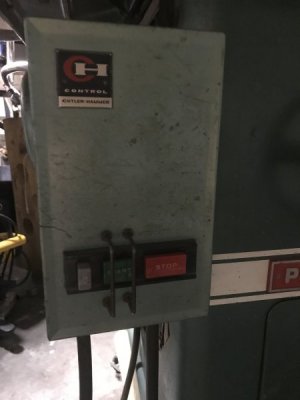- Joined
- Mar 26, 2018
- Messages
- 2,724
I use VFD's quite a lot. Size the VFD right to the size of the motor. Unless the VFD is crap, it will put put the power it is rated for no problem.
The brand of VFD you have looks decent, but make sure you can find instructions on how to set it up (enter the motor parameters).
Another place to look is at Automation Direct's GS2 line of VFD's. A bit more expensive that you found, but they are also a legit US based company.
https://www.automationdirect.com/ad...ts_(115_-z-_230_-z-_460_-z-_575_VAC)/GS2-23P0
Edit: The VFD will typically be looking for a start stop switch wired into it using 24V logic voltage. Don't ever disconnect the VFD outputs from the motor under power (a 3 phase switch) or you can damage the IGBT's on the inverter from a high dV/dt spike.
The brand of VFD you have looks decent, but make sure you can find instructions on how to set it up (enter the motor parameters).
Another place to look is at Automation Direct's GS2 line of VFD's. A bit more expensive that you found, but they are also a legit US based company.
https://www.automationdirect.com/ad...ts_(115_-z-_230_-z-_460_-z-_575_VAC)/GS2-23P0
Edit: The VFD will typically be looking for a start stop switch wired into it using 24V logic voltage. Don't ever disconnect the VFD outputs from the motor under power (a 3 phase switch) or you can damage the IGBT's on the inverter from a high dV/dt spike.


